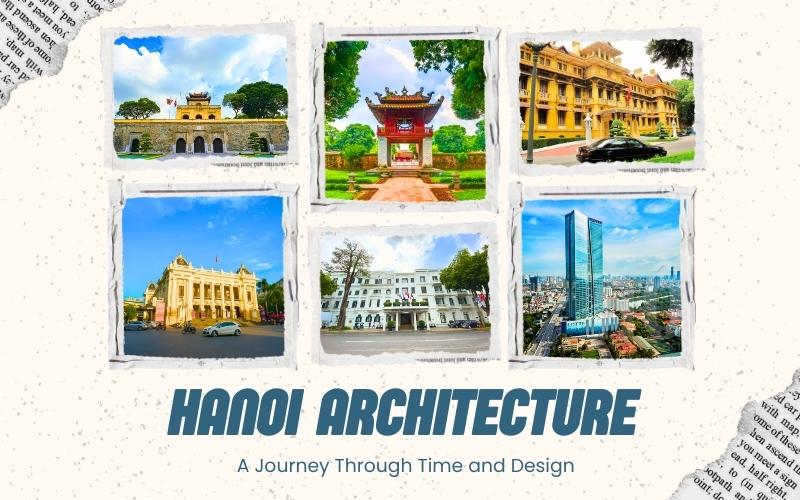
Hanoi has always been famous for its longstanding history. Along with the century-old historical background is the unique architecture of this beautiful city. Hanoi architecture has been through several eras ever since the nation of Vietnam was born. Let’s join in a journey of time to explore the spectacular architecture of Hanoi with IDC Travel through this article.
Special Features of Hanoi Architecture through Times
Hanoi Architecture during Feudal Times
The urban architecture of Hanoi found its beginnings when King Ly Thai To relocated the capital from Hoa Lu to Hanoi in 1010. This era’s architecture encompassed various types: citadels, palaces, mansions, religious and cultural edifices, and educational institutions.
Over centuries of wars, construction, and development, only a few of these structures remain today, scattered throughout the central area of present-day Hanoi. However, their historical and artistic value has been affirmed through distinct characteristics:
- Architecture bearing a strong national and regional identity.
- Simple, modest, lightweight architectural styles suitable for local customs and climate.
- Close integration with natural landscapes.
- Balanced and harmonious layouts with proportionate design.
- Attractive and folkloric decorative colors.
- The primary use of local materials is solid and economically sound structural systems.
Hanoi Architecture under the Control of French Colonial
The presence of the French from 1873 to 1945 left Hanoi with a “French Colonial Architectural Heritage” that holds significant value, particularly in terms of aesthetics. Many structures, from their construction to the present day, continue to affirm their crucial contribution to Hanoi’s appearance.
Most of Hanoi’s major public structures follow the Beaux-Arts architectural style, creating grand and magnificent edifices capable of expressing the political and economic power of a city or a nation. This style aimed to revive classical architectural values and later incorporated variations like the Renaissance, Baroque, and French Neoclassicism.
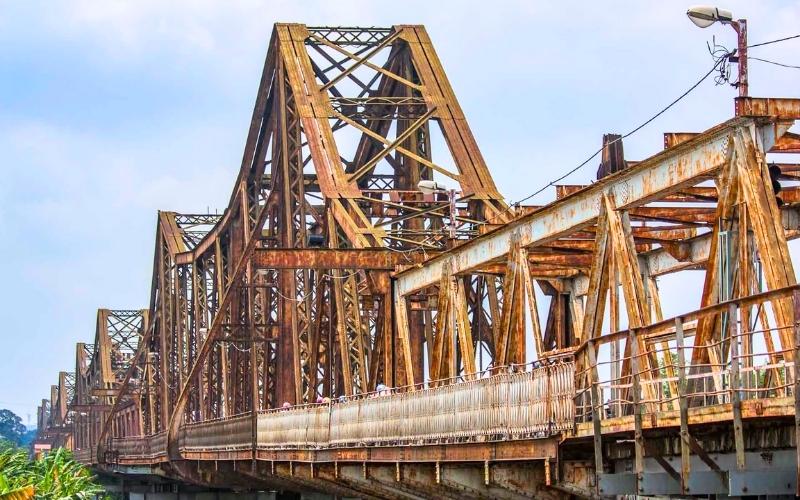
The unique structure of Long Bien Bridge
One of the standout architectural landmarks of this era in Hanoi is the Long Bien Bridge, one of the city’s iconic symbols. This bridge was constructed from 1898 to 1902 under the name Doumer Bridge. It was also the largest construction project in Indochina at that time.
Hanoi Architecture in Modern Times
After the wartime period, Hanoi continuously expanded its boundaries with several adjustments to urban planning. Moreover, the city also changes in the function of certain areas, particularly the emergence of new urban areas.
In the early days, the architecture of Hanoi had a diverse style. It is often a patchwork of various architectural styles, including modern, Western classical, and Vietnamese traditional. The reason for this chaotic situation was the low aesthetic awareness of the population and the relatively inexperienced architectural designers.
Today, Hanoi architecture has seen more investment and modernization in projects. Hanoi now boasts numerous high-rise buildings and luxurious shopping centers. However, as older structures still coexist, when visiting Hanoi, you will be able to witness a unique contrast in its urban landscape.
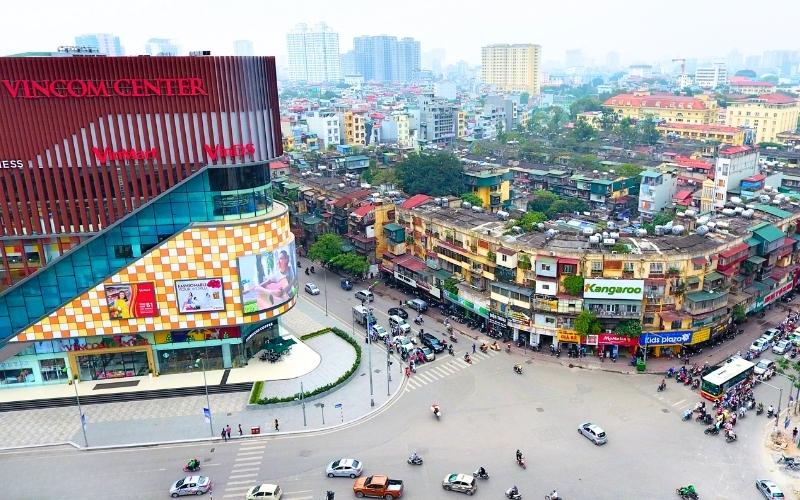
A Unique Contrasting Landscape of Hanoi – Modern Shopping Mall vs. Old Apartment Complex
Signature Architectural Works in Hanoi
The diverse architectural heritage is a reflection of Hanoi’s heroic past and its position as the capital of Vietnam. Therefore, several architectural landmarks in Hanoi showcase the city’s architectural evolution.
Imperial Citadel of Thang Long
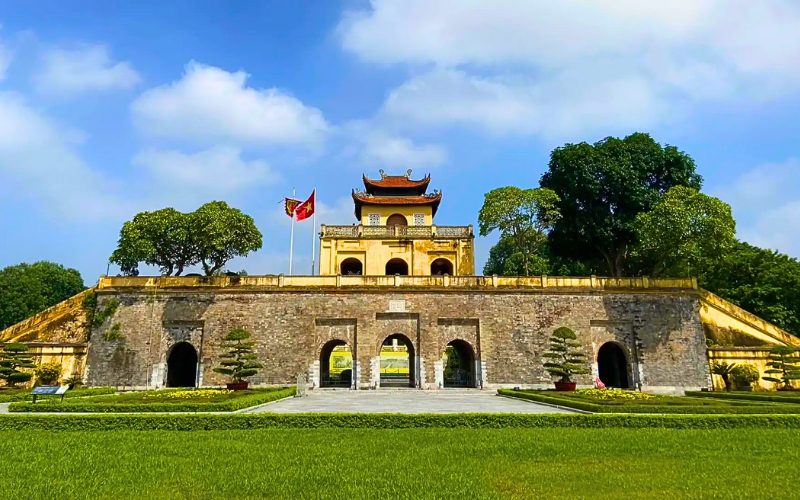
Imperial Citadel of Thang Long
The Imperial Citadel of Thang Long is definitely a must-visit attraction during your trip to Hanoi. This place is a complex of historical relics linked to the history of Hanoi and the surrounding provinces. In particular, this site was the Imperial Citadel built by King Ly Thai in 1010 when he relocated the capital to Hanoi, remarking the birth of Hanoi architecture. Moreover, the Imperial Citadel of Thang Long is considered the center of the ancient Hanoi capital. It served as the royal administrative center, residence, and workplace for the officials of the court. In 2020, UNESCO recognized the Imperial Citadel of Thang Long as a World Cultural Heritage site.
Temple of Literature
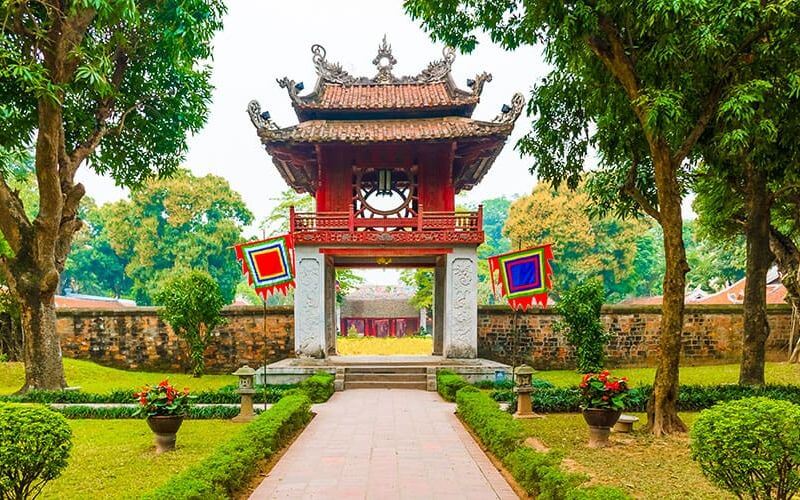
Temple Of Literature
Formerly, the Temple of Literature was the first university in Vietnam. It is an ancient and unique architectural complex where the Eastern architectural style is clearly evident in every detail. Besides, you will find the architecture of this temple associated with a strong influence of Confucianism and Buddhism.
The main materials used to construct the Temple of Literature are ironwood and fired bricks. These are traditional materials that many ancient architectural works in Hanoi also used. The layers of tiles and decorations in the Temple of Literature are all meticulously and elegantly crafted. Therefore, this place will surely impress you during your visit.
Hanoi Old Quarter
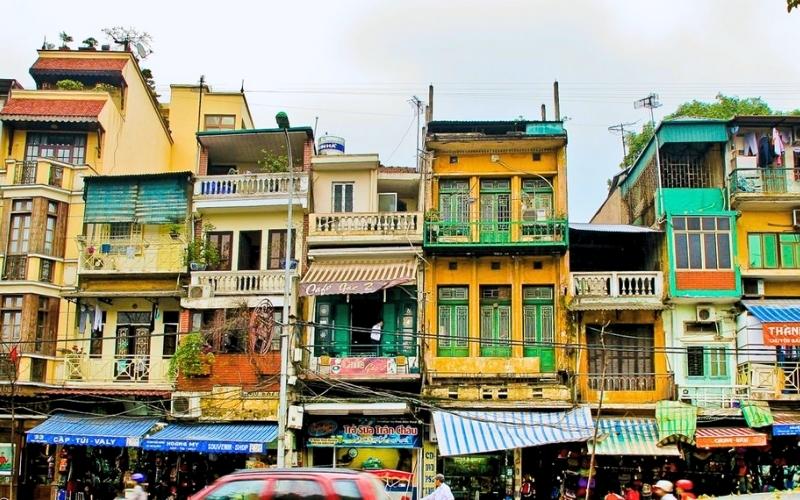
Tube Houses in Hanoi Old Quarter
The Hanoi Old Quarter is another signature site that clearly reflects Hanoi architecture. This place is a unique architectural ensemble, bearing the distinctive character of the Vietnamese people. Before the French colonial period, the old streets shared a chessboard-like layout. After the arrival of the French, the Old Quarter underwent several changes but fundamentally preserved its original architecture. Hanoi Old Quarter, with its small tube houses, bustling streets, gracefully curved temple roofs, and lush green spaces, has created a beauty that only the capital city of Hanoi possesses.
Hanoi Opera House
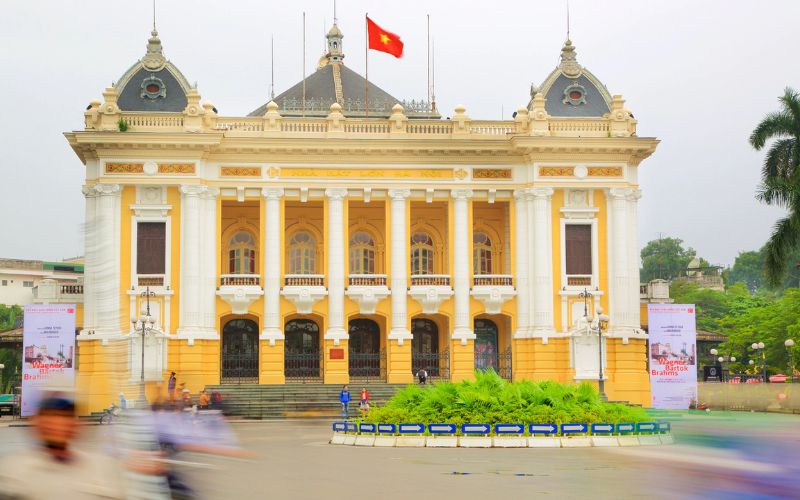
Hanoi Opera House
This is an architectural structure for artistic performances on the August Revolution Square, at the beginning of Trang Tien Street. The construction was initiated by the French in 1901 and completed in 1911, modeled after the Opera Garnier in Paris but on a smaller scale. Additionally, the building materials were adjusted to be suitable for the Vietnamese climate. Hanoi Opera House is a unique architectural masterpiece with exceptional historical, architectural, and artistic values of Hanoi. You can visit here to admire its grandeur and enjoy the art performances.
Sofitel Legend Metropole Hanoi
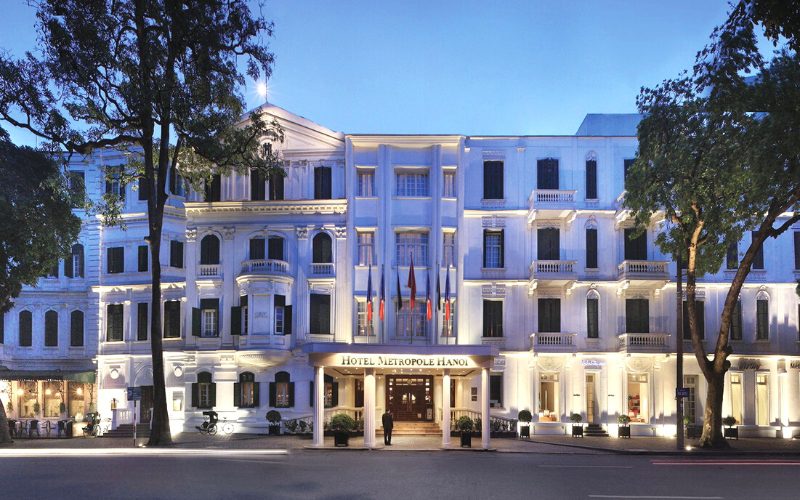
Sofitel Legend Metropole Hanoi
If you’re looking for an elegant hotel in the heart of Hanoi, the Sofitel Metropole is an absolutely perfect choice for you. This hotel was constructed in 1901 by two French investors. Since its inception, Sofitel Metropole Hanoi has consistently been the top choice for many business travelers and tourists. It’s the first 5-star hotel in Hanoi, featuring a classic architectural style from the French colonial era, and it’s conveniently located in the center of Hanoi, near Hoan Kiem Lake and the Hanoi Opera House.
Foreign Ministry Headquarters
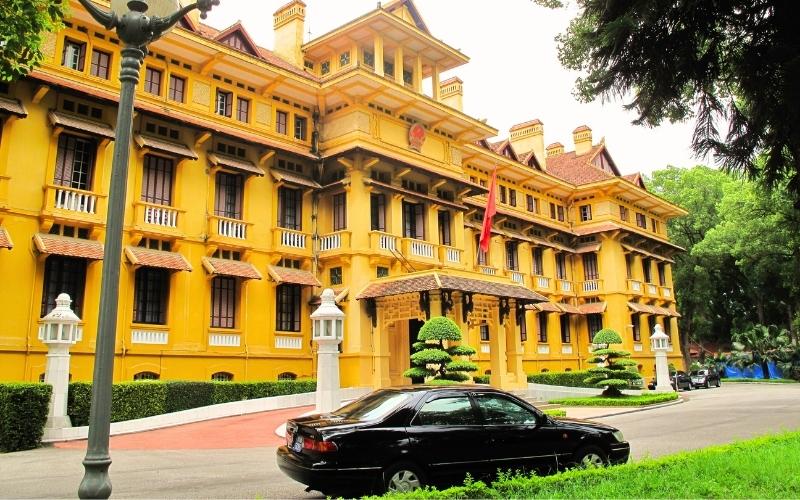
Foreign Ministry Headquarters
As you venture to visit Ho Chi Minh’s Mausoleum, you’ll notice the Foreign Ministry Headquarters prominently situated along Chu Van An Street. People believe that it is one of the most beautiful buildings in Hanoi. The structure was conceived by the architect Ernest Hebrard in 1924, construction commenced in 1925, and it was completed in 1928. The building follows the urban planning concept of the “city garden,” which was popular at the time. This architectural style harmoniously combines elements to create a unique beauty.
Over the course of nearly a century, Hanoians have always esteemed this building for its stunning architecture, representing a distinctive example of Eastern architectural style. It contributes significantly to the urban architectural beauty and allure of the capital city.
Ho Chi Minh Mausoleum
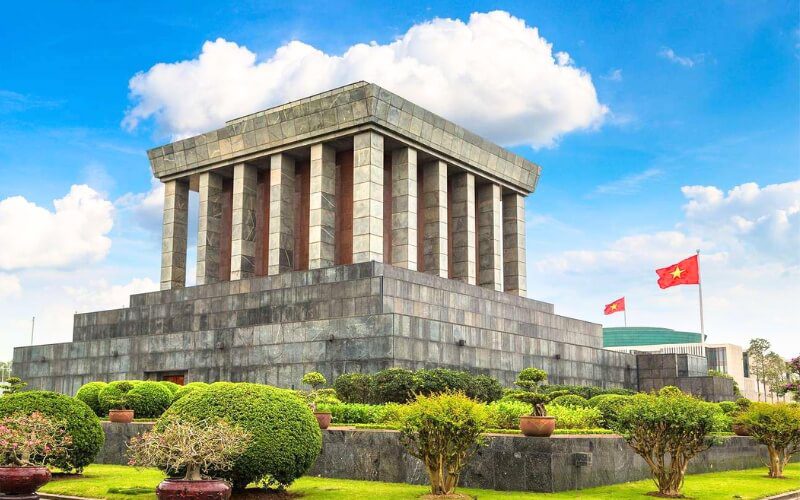
Ho Chi Minh Mausoleum
Right in front of the Foreign Ministry Headquarters stands the Ho Chi Minh Mausoleum. This mausoleum is an imposing architectural masterpiece, seamlessly blending tradition with modernity. The lower part of the Mausoleum, constructed from dark granite, consists of three tiers, with each upper level slightly smaller than the one below, creating a grand tri-level structure. The unique characteristics of Vietnamese architecture bestow upon the Mausoleum a solemn and resolute presence.
The Mausoleum’s roof forms a gracefully tiered structure with intersecting lines, offering a harmonious blend of the neat simplicity of modern architecture and the delicate, flowing essence of traditional Vietnamese curved roofs. You should visit this site to admire its grand architectural design and to gain a deeper understanding of Ho Chi Minh, the founding President of Vietnam.
Skyscrapers in Hanoi
If you visit Hanoi now, you will find several high-rise buildings in the city. Keangnam Landmark Tower is the highest building in Hanoi with 72 floors. The tower comprises of luxurious apartments, upscale hotels, a shopping complex, and office spaces.
Besides, Lotte Tower with 65 floors is the second-highest building. Like Keangnam Tower, this building is also a complex featuring hotels, offices, and a shopping mall. However, Lotte Tower offers you a Skydeck with a perfect view of the whole of Hanoi that you can’t experience at any other place.
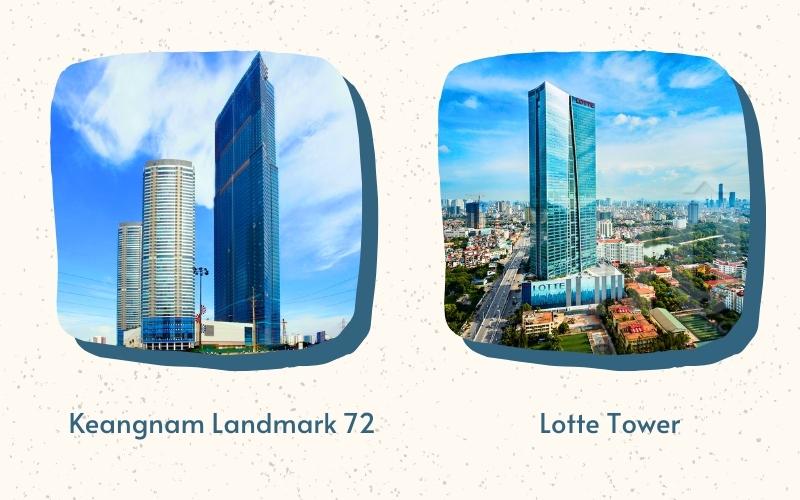
Keangnam Landmark 72 and Lotte Tower
Apart from the abovementioned towers, there are various other high-rise buildings in Hanoi. It is because the city’s architecture is now developing and transferring to the modern architectural style, showcasing the desire to catch up with the worldwide architectural trend.
If you love to discover the unique architecture associated with longstanding history and culture, Hanoi is a perfect destination for your visit. Plan your trip today to immerse yourself in the beautiful landscape of Hanoi. In case you need any help preparing your trip, feel free to contact us. We are always ready to give you a hand.




What a fascinating read! I’ve always been curious about how Hanoi’s architecture reflects its complex history, and this blog really brings that to life. From the elegance of French colonial buildings to the charm of old tube houses, it’s amazing how much character is packed into every street. Makes me want to wander the Old Quarter all over again, but this time with fresh eyes!
Thank you so much for your sharing! Totally agree, Hanoi’s architecture is like a living timeline, blending so many eras and styles in such a unique way. Wandering the Old Quarter really does feel different once you start noticing all the little details. Hope you get the chance to explore it again soon! If you need any support during your future holiday, please contact us; our gurus are willing to help at any time!
Warm regards,
IDC Travel.